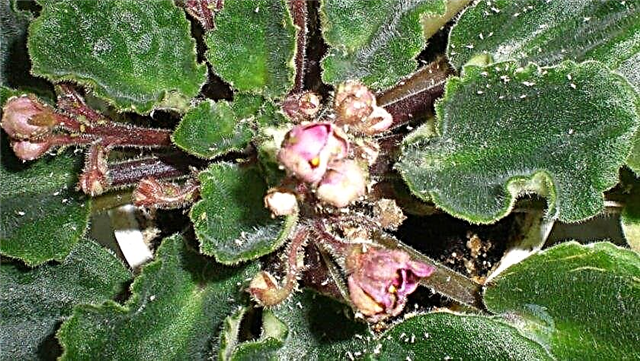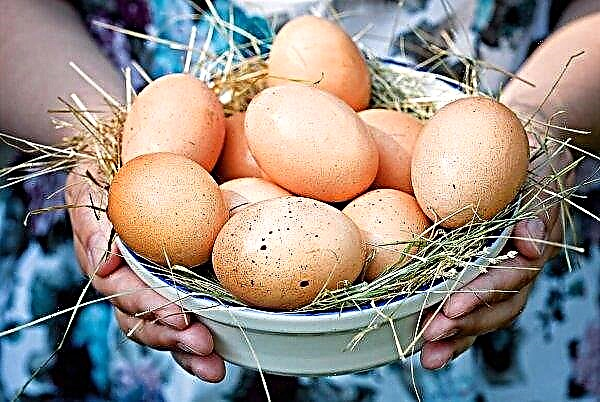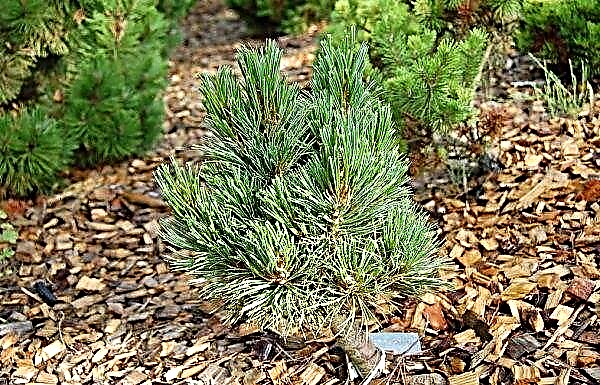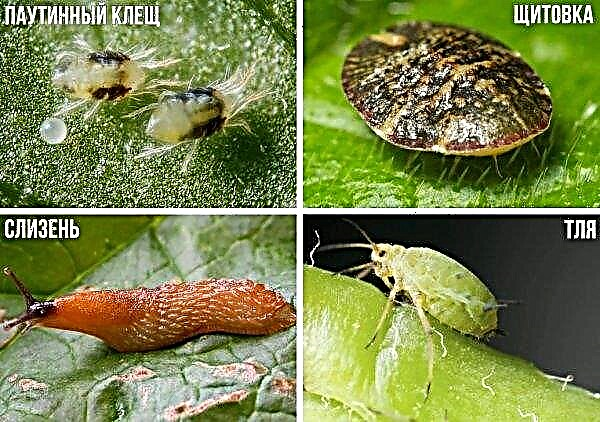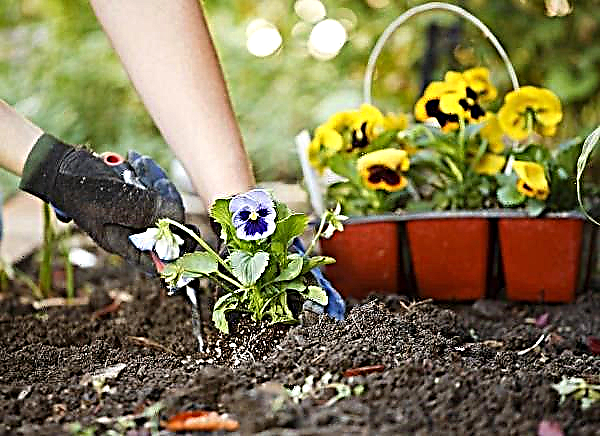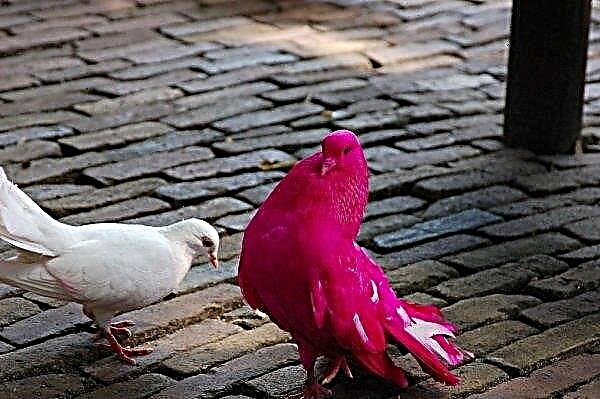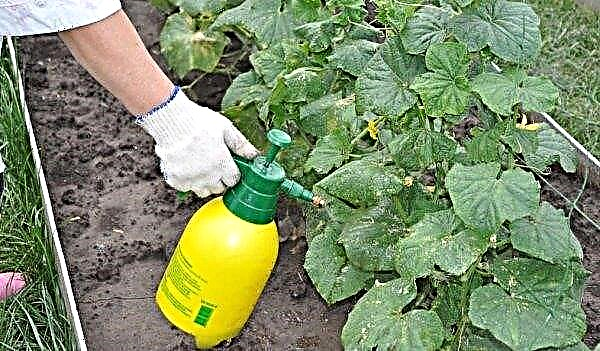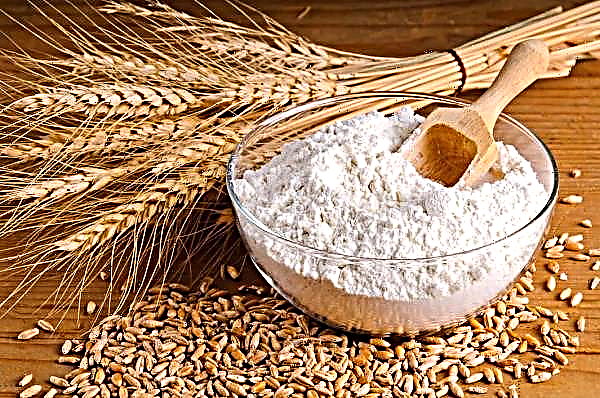Violets of the LE Esmeralda variety beckon with the fullness and brightness of their inflorescences. During the period of budding, the surface of the flowerpot is completely covered by a luxurious cap of large flowers with darkening of the petal edges and corrugated ruffle. How to care for a plant at home, avoiding difficulties in growing, read on in the article.
Botanical description of the plant
LE Esmeralda is the work of breeder Elena Lebetskaya, which justifies the initial part of the variety name. The saturated color of the petals and foliage of the plant creates an atmosphere of luxury and triumph, therefore, the author associated the bred flower with a precious semiprecious mineral (in Spanish, the word “esmeralda” means “emerald”). The beauty and moodiness of the culture is motivated by its association with Esmeralda Victor Hugo from the Notre Dame Cathedral.
LE Esmeralda is characterized by large velvety leaves with a uniform green color. At the base, they are assembled into a neat, flat outlet. Sometimes in the process of aging, it can acquire a slight undulation. However, the strong curliness of the foliage indicates the transfer of the variety.
Flowering of this violet is long, bouquet-cap type. Despite the fact that the variety is fully revealed only after 2-3 buds, the first tab of the peduncles is quite plentiful.
The flowers are large and bright, terry or semi-double, with rich shades of ripe raspberries. The uniqueness of the variety lies in the unusual white-green edging of the petals. A distinctive carved shape blends harmoniously with the light green piping of the upper skirt and green - the bottom. As the bud unfolds, the ruffles brighten, but never become pure white. If you keep the flowerpot in a cool room, the border color will be more juicy.Important! In floriculture, there is another variety of the RS-Esmeralda variety, bred by breeder Svetlana Repkina. Her flowers are characterized by large sizes (in diameter they can reach 7 cm) and a snow edging on the edge of the petals. The color of the buds of this author’s plants inside is more saturated than at the edges.
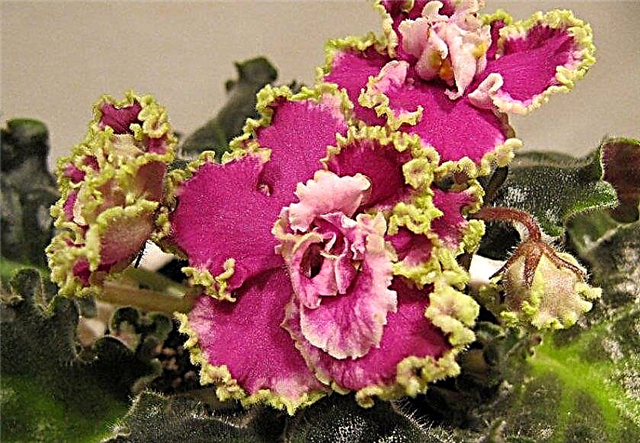
The flowering period of the culture depends on the conditions of its cultivation and the time of year. For example, in the cold season, violet can bloom from 3 to 6 months. In the final phase, wilting of unopened buds is not excluded. With the onset of heat, vegetative processes are activated. Variety instability is noted: it is almost impossible to find 2 rosettes with identical flowering. When blooming, violet loses color saturation.
The plant is fast growing.
Important! Unlimited illumination of violets with fluorescent lamps leads to the appearance of red spotting on the foliage.
House growing conditions
Despite the widespread prevalence of violets, many flower growers are faced with ambiguities in their cultivation. Based on this, we will analyze in detail all the requirements of a flower for comfortable development.
Lighting
To speed up the laying and opening of the buds, it is advisable to put the flowerpot in a well-lit place, covering it from direct sunlight.
The fast growth and active flowering of LE Esmeralda is ensured with a 14-hour daylight. Therefore, in winter, additional lighting is appropriate.
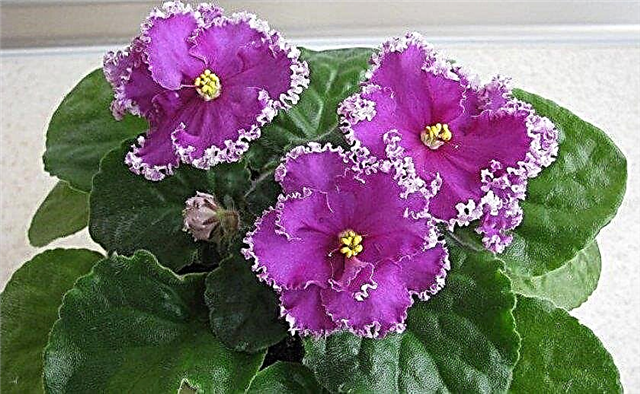
Temperature
Both a draft and high temperature in a sultry summer can ruin a flower. To avoid adverse factors, it is important to control the daily temperature regime at the level of + 20 ... + 24 ° С year-round. At night, it is permissible to reduce the thermometer column by only 4 degrees compared to daytime indicators.
Air humidity
Violets react painfully to spraying foliage, but love moist air. Therefore, in order to provide them with comfortable conditions and prevent the development of fungal infections, you need to place a vessel with pebbles and water near the flower pot. Other flower growers, as an alternative, recommend a container with wet perlite. Monthly washing of the sheet plates will not be superfluous, this is done with a damp cloth. This procedure can also be done under the shower, but after that it is absolutely necessary to remove excess moisture.
Did you know? Many people consider violet a sacred flower. That is why the ancient Greeks decorated her buds with their homes and statues of the gods; the Gauls showered the newlyweds with their petals, and among the French, the highest award in Toulouse poetry tournaments was gold violet.
Home Care
Competent agricultural technology for the cultivation of violets of any kind provides for regular watering, fertilizers and timely transplantation. Some varieties require anti-aging pruning. Let us consider in more detail to what extent and how often these procedures are relevant for LE Esmeralda.
Watering
Beginning flower growers often encounter diseases of violets resulting from improper watering. The fact is that their leaf rosette is located low near the ground, and the moisture accumulated on the fleecy surface of the foliage evaporates for a long time, thereby provoking the emergence of a pathogenic environment. Therefore, watering a pot under the root is extremely undesirable.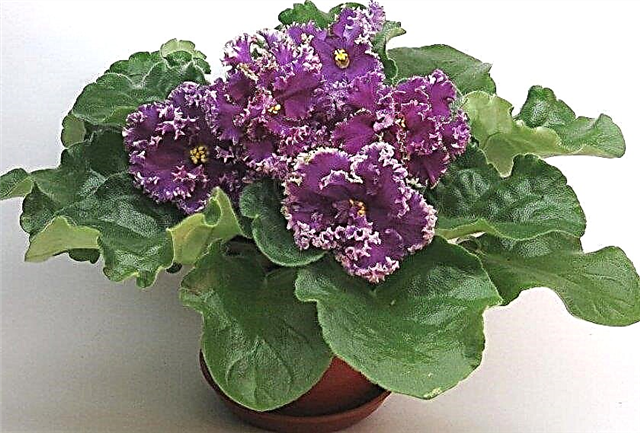
Surface watering for LE Esmeralda is only appropriate if you use a watering can with a long narrow nose. When moistening the soil in a pot in a similar way, you need to make sure that water drops do not fall on the leaves and in the center of the outlet. The procedure is carried out carefully and without haste until moisture seeps from the drainage holes of the pot into the pallet. According to experts, overhead irrigation promotes leaching of salts accumulated at the edges of the pot, the appearance of which is due to hard water.
Violet need to be watered from below. To do this, just submerge the pot in a container of water. After moisture appears on the surface of the soil, the flower can be removed from the pallet. After waiting for the water to drain, the pot is returned to its old place. Some housewives advise moistening the substrate in a pot using the lace method. Its essence lies in the rope specially provided for planting, which is passed through the drainage hole on top of the pot. With this device, when the pot is placed in a vessel with water, the substrate quickly absorbs moisture.
Watering for LE Esmeralda is recommended twice a week. Water with well-settled room temperature water.Top dressing
Fertilizers for this crop are relevant only during the growing season.
They are introduced (depending on the phases of development) according to the following scheme:
- In early spring, nitrogen-containing substances are added to water to moisten the substrate;
- During the formation of buds, phosphorus-potassium top dressing is applied every 2 weeks.

Pruning
The chaotic removal of leaves reduces the decorativeness of violets. Illiterate pruning negatively affects the flowering time and provokes the death of the root system. The fact is that in deciduous sinuses flower stalks are laid. Cutting them off, you break the flowering phase and provoke disruptions in the biochemical processes of the plant, thereby shortening its life. Therefore, in this way, getting rid of excess vegetation on the violet bush is strictly prohibited.
Experts advise once a year after flowering to cut the rosette from below, leaving at least 3 upper rows of leaves. This procedure will rejuvenate the culture and at the same time rid it of old faded biomass. However, over time, instead of a neat outlet from the pot, a bare high leg of the trunk will appear.Did you know? The famous Iranian wine "Kurdistan" is prepared on the basis of a floral infusion of violets.
You can solve the problem by transplanting a flowerpot, deepening an unaesthetic place in the substrate. Other flower growers advise cutting off the top of the bush so that a 1 cm high stump remains under the leaves. It is dipped for several days in a container with an aqueous solution of a growth stimulant and, after the appearance of the roots, is planted in a new pot.
It is also important to cut off faded peduncles and damaged parts of the plant as necessary.

Transfer
Transplant violet LE Esmeralda is necessary annually. In case of fungal infections, the flowerpot is subjected to this procedure as necessary. It is better to carry it out in the spring.
For transplantation, you need a light, loose substrate, consisting of equal parts of peat, deciduous and coniferous land. It is important that this mixture absorbs moisture well, is airtight, and its acidity corresponds to a pH of 5.5 - 6.5. In addition, it is recommended to monitor the amount of nitrogen and phosphorus-potassium substances contained. If the proportion of the first ingredients should be moderate, then the second can not be limited.
The choice of pot for violets depends on the size of its root system. Preferred containers, the diameter of which corresponds to the three diameters of the leafy outlet. That is, the flowerpot should be 3 times larger than its vessel.Important! In order for the violet outlet to develop evenly, the pot with the plant must be periodically rotated in different directions with respect to the light.
Experts recommend clay and ceramic products, since they allow the roots to breathe, which is of particular importance for a full-fledged vegetation. However, all violets and senpolia (varieties of violets) are characterized by increased vitality, so they are often rooted in plastic pots.
The process of transplanting a flowerpot is carried out by transferring a highly moistened earthen coma into a new container. Sprinkle on top with fresh soil. If the culture is old (and also with a long absence of transplants - more than 2 years), the transplant land must be completely replaced.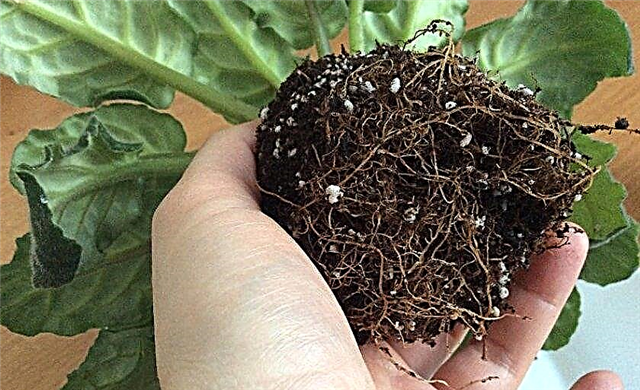
Breeding
To get a new seedling of LE Esmeralda, you need an ordinary leaf, peduncle, stepson or stalk. The easiest way to propagate violets is considered leaf. It is best practiced in spring or summer. For planting, a well-developed sheet of 2 or 3 rosette is prepared. It is important that it is not damaged, well kept in shape and color.
To accelerate root growth, flower growers dissolve a tablet of activated carbon in a glass of water and place a preform in the resulting liquid so that its base deepens by 1 cm. After that, it is advisable to place the vessel in heat, avoiding direct sunlight. After a few weeks, thin filiform roots form on the leg of the leaf plate. Then the violet can be transplanted to a permanent place.Important! Excessively large pots are not suitable for planting violets. In such containers, the flower will emit all its resources for filling with the root system. A pot is needed in size by about 500-700 ml, possibly less. Its height should be 10 cm, diameter — from 10 to 13 cm.
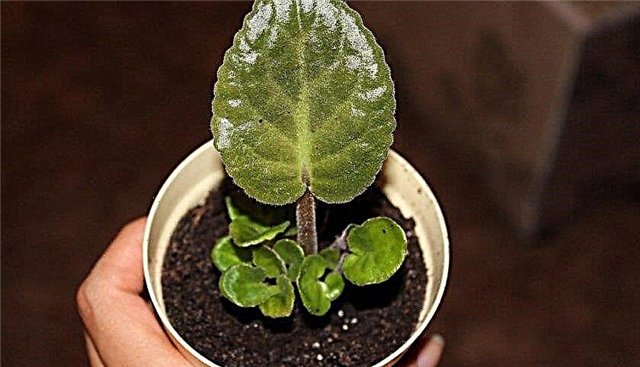
Possible growing difficulties
Violations in the rosette formation, flowering, as well as putrefactive infections, fungi and red spotting on the foliage are all signs of improper care of the flowerpot. If all its requirements are strictly observed, problems can be avoided.
We recommend that you familiarize yourself with other varieties of violets:
Violets are sensitive to:
- powdery mildew. The disease occurs as a result of excessive dampness and cold. It appears as a white coating on the foliage. The treatment is carried out with fungicidal preparations "Topaz", "Saprol";
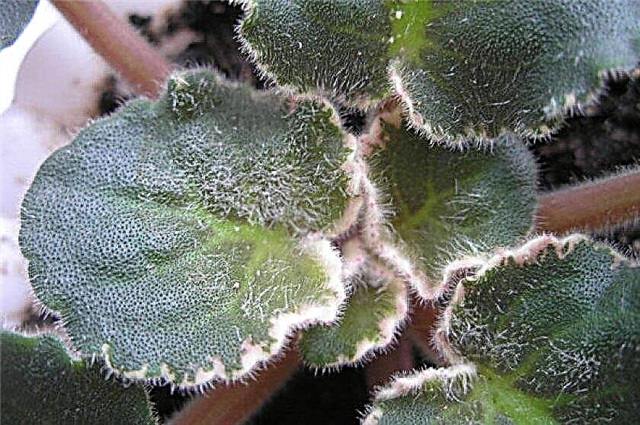
- rust. The reason is water entering the leaves. You can solve the problem by eliminating the annoying factor and cutting off the affected areas;
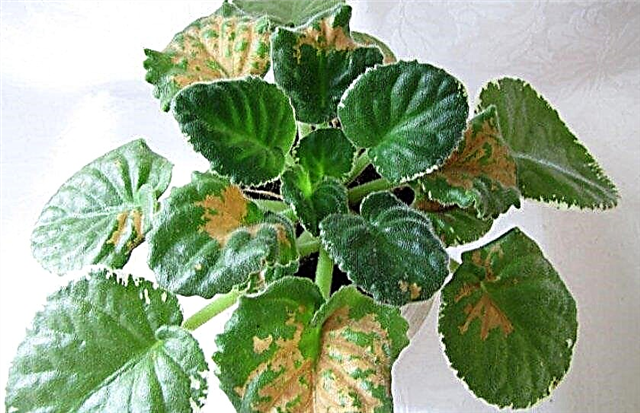
- gray rot. It is a fluffy gray-brown coating. Appears with improper care and is able to destroy the plant. During treatment, transplantation and preliminary disinfection of the root system with calcium permanganate is relevant;
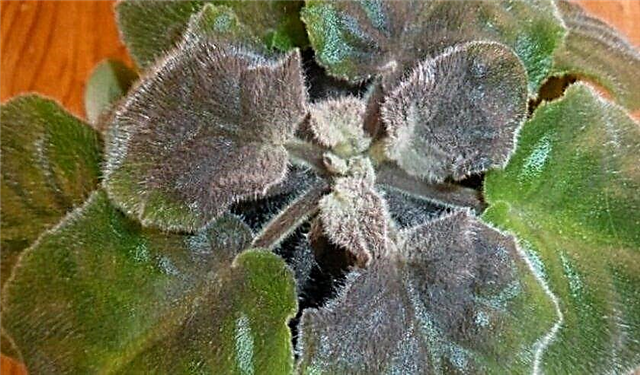
- pests in the form of spider mites, whiteflies, scutes. Any insecticides will come to the rescue (for example, Aktara, Aktellik).
